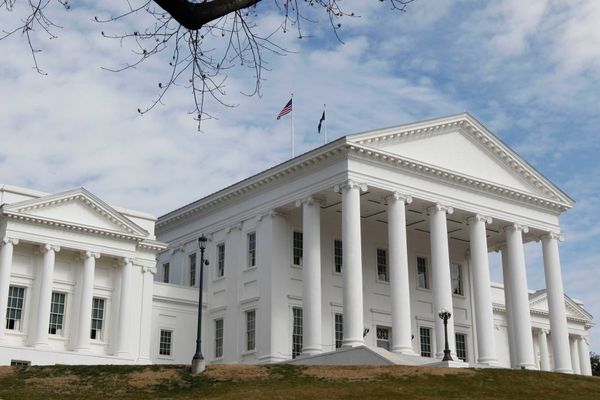
Voters are underwhelmed by the Morrison government’s response to recent catastrophic flooding in New South Wales and Queensland, and a majority fear disasters will be worse in the absence of significant action to address climate risks, according to the latest Guardian Essential poll.
The survey of 1,091 voters finds only 26% of respondents characterised the Coalition’s recent flood disaster response as good, while 40% thought poor and 34% said neither good nor poor.
The new data points to community disappointment but the public backlash after the flood disaster is less visceral than after the catastrophic summer bushfires of 2019-20. Back then, in January 2020, 57% of Guardian Essential respondents disapproved of Morrison’s response while 32% approved.
In the latest poll, a majority of respondents think the government needs to prepare for extreme weather events (65%). A majority also thinks if there isn’t significant action on climate crisis policy soon, floods will be worse in the future (57% agreement).
A majority also believes the government needs to replace coal with renewable energy alternatives (53%). But only 45% of respondents say the Morrison government contributed to the floods by not taking enough action to mitigate the risks of global heating.
Voters were more concerned about a lack of climate action in January 2020. Back then, 65% of respondents thought bushfires would be worse if there wasn’t substantial climate action soon and 60% of respondents pointed the finger directly at the Coalition for not doing enough.
The Morrison government and the Perrottet government in NSW were criticised in the immediate aftermath of the floods for moving too slowly with rescue and recovery efforts.
The federal government confirmed on Friday it would dip into its Emergency Response Fund to pay for flood mitigation measures in NSW and Queensland after months of escalating criticism from Labor about the Coalition’s decision not to draw from the $4bn pool.
Federal parliament will resume next week for a short session to allow the government to deliver the budget on 29 March. Morrison is expected to call the election within weeks.
At the weekend, the Liberals in South Australia became the first incumbent government to lose an election since the onset of the Covid-19 pandemic.
With the federal contest in sight, both the prime minister and the Labor leader, Anthony Albanese, are in full campaign mode. The latest Guardian Essential data suggests the gap is closing between Morrison and Albanese in the poll’s preferred prime minister metric.
Morrison is currently the preferred prime minister for 39% of respondents (down from 42% a fortnight ago) and Albanese by 36% (up from 34%). One-quarter of respondents aren’t sure which candidate they prefer.
Comparing the result with previous election cycles, just before the 2010 election, Julia Gillard was ahead of Tony Abbott 47% to 35% with 18% undecided.
In 2013, Abbott was ahead of Kevin Rudd 41% to 22% with 37% undecided. In 2016, Malcolm Turnbull was ahead of Bill Shorten 39% to 31% with 30% undecided while in 2019 Morrison was ahead of Shorten 39% to 32% with 28% undecided.
Albanese is currently ahead of where Abbott, Rudd and Shorten were at the same point in the political cycle on this measure.
Voting intention figures, calculated by Guardian Essential, now express the head-to-head metric of the major party contest as two-party preferred “plus”, rather than the standard two-party preferred measure. This change in methodology, adopted after the 2019 election, highlights the proportion of undecided voters in any survey, providing accuracy on the limits of any prediction.
A fortnight ago, Labor’s primary vote was on 35%, the Coalition on 36% and the Greens on 10%. The two-party preferred “plus” result had Labor on 49%, the Coalition on 44% and 7% of respondents undecided.
In the latest poll, Labor’s primary vote is 37% (up from 35%), Coalition: 37% (up from 36%), with 7% of respondents undecided. On the two-party preferred “plus” measure Labor is on 48% (down from 49%), the Coalition: 44% (steady), with 7% of respondents undecided.
While Morrison was buffeted in the past fortnight by public criticism of the Coalition’s flood response, Albanese has been trying to fend off internal backbiting about party culture that erupted after the sudden death of the Victorian right-wing senator Kimberley Kitching at the age of 52.
Despite their recent challenges, in this fortnight’s data, both leaders are up slightly on the poll’s approval metric, with 45% of respondents (up from 44%) currently approving of Morrison’s performance, 48% disapproving (down from 49%), with 7% of voters unsure.
When it comes to Albanese, 43% of respondents approve of the opposition leader’s performance (up from 42%), while 36% disapprove (down from 39%). While only 7% of respondents don’t have a clear opinion about Morrison, the number of voters on the fence about Albanese remains significantly higher at 20% of respondents.
All of these movements are inside the poll’s margin of error, which is plus or minus three points.
On Tuesday, the Australian National University will also release the latest data on voting intention from a longitudinal survey of 3,472 voters.
It finds that the Coalition’s primary vote has slumped to 32.2% – a “dramatic drop” from 40.3% in January 2021 and 35.4% in January 2020.
The lead author of the Centre for Social Research and Methods study, Prof Nicholas Biddle, said support for the Morrison government was “significantly lower than the 37% who said they would vote for Labor, who would appear to have been in an election-winning position”.
The proportion of undecided voters increased from 4.1% in January 2021 to 5.9% in January 2022, it found.
According to the survey, women have a “relative preference for Labor and the Greens compared with males” who were “also far more likely not know who they would vote for”.
The study did not estimate the two-party preferred vote “due to lack of information in our survey on preference flows” but noted the result of primaries was consistent with public polling.







